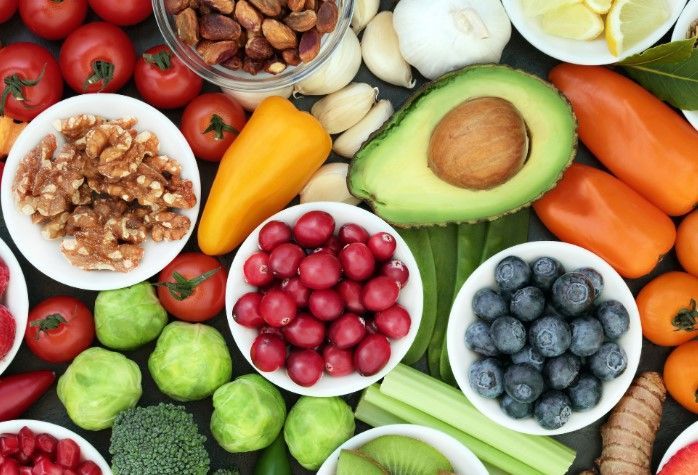How to Choose a Trusted Holistic Practitioner: What the Credentials Really Mean
Dr. Karen Plymel, Functional Medicine Expert
Functional Medicine, Integrative Medicine, and Naturopathic Doctors: Understanding the Differences
In today’s health-conscious world, many people are seeking holistic, root-cause approaches to chronic illness and wellness. However, navigating titles like Functional Medicine Doctor, Integrative Medicine Physician, Naturopath, and Naturopathic Doctor (ND) can be confusing. While they often share a patient-centered, whole-person approach, there are critical differences in education, training, and licensure. Below is a clear comparison to help you make informed decisions when choosing a practitioner.
Functional Medicine Doctor
Functional medicine doctors focuse on identifying and addressing the root causes of disease using a systems biology-based approach. It's typically practiced by MDs (Medical Doctors), DOs (Doctors of Osteopathic Medicine), NPs, or other licensed healthcare professionals.
Education and Certification
Medical degree: Must be a licensed MD or DO
Functional medicine training: Often completed through the American Academy of Anti-Aging Medicine (A4M) or The Institute for Functional Medicine (IFM)
Certification: Board Certification in Anti-Aging and Regenerative Medicine (ABAARM)
To be certified, practitioners must:
- Hold a valid license as a MD or DO
- Complete an approved fellowship such as FMNM or FAAMFM
- Pass the ABAARM exam or FMCP-M exam
How to Verify:
- Check medical licensure through your state’s medical board.
- Verify functional medicine certifications here: A4M or IFM
Key Features:
- Emphasizes personalized lifestyle interventions.
- Uses advanced testing (gut microbiome, hormones, etc.).
- Seeks to correct imbalances rather than only suppress symptoms.
- Treats the whole body vs individual systems.
- Focuses on preventative and regenerative Medicine.
Integrative Medicine Physician
Integrative medicine combines conventional Western medicine with complementary therapies (acupuncture, meditation, supplements, etc.) to treat the whole person—mind, body, and spirit.
Education and Certification
Medical degree: Must be a licensed MD or DO
Specialized training: Available through the Andrew Weil Center for Integrative Medicine and other institutions.
Certification: American Board of Integrative Medicine (ABOIM) provides board certification.
To be certified, practitioners must:
- MD or DO degree and board certification in a primary specialty.
- Complete an approved fellowship or CME hours in integrative medicine.
- Pass the ABOIM exam.
How to Verify:
- Verify board certification via the American Board of Physician Specialties.
- Confirm state medical licensure.
Key Features:
- Blends traditional care with evidence-based alternative therapies.
- Focuses on prevention, nutrition, stress management, and spiritual health.
- May include collaboration with chiropractors, acupuncturists, and others.
Naturopath
This term is often used broadly and can refer to practitioners with variable training—from online certificates to non-accredited programs. Naturopaths are not a MD or DO. They may or may not be licensed healthcare providers.
Education and Certification:
- No standardized education or licensure requirements unless the individual is a licensed ND.
- May complete informal or non-accredited courses in herbalism, homeopathy, nutrition, etc.
Warning: “Naturopath” is not the same as a Naturopathic Doctor (ND or NMD) and the title isn't a protected title in many states.
How to Verify:
Ask about educational background, licensing, and whether they attended an accredited naturopathic medical school.
If not licensed as an ND, consider their scope of practice and potential risks.
Key Features:
- May offer herbal remedies, detoxes, homeopathy, and lifestyle advice.
- Scope and quality vary widely depending on training.
Naturopathic Doctor (ND or NMD)
A Naturopathic Doctor is a licensed healthcare professional trained at an accredited four-year naturopathic medical school. They combine natural therapies with diagnostic training and a holistic approach.
Education and Certification:
Degree: Doctor of Naturopathic Medicine (ND or NMD) from a Council on Naturopathic Medical Education (CNME)-accredited program.
To be certified, practitioners must:
- Pass the Naturopathic Physicians Licensing Exam (NPLEX).
- Not licensed it every state.
- May or may not complete residency
How to Verify:
- Use AANP’s Find a Doctor Tool or contact your state’s licensing board.
- Verify if they graduated from one of the seven accredited schools (e.g., Bastyr University, National University of Natural Medicine).
Key Features:
- Trained in clinical nutrition, herbal medicine, homeopathy, physical medicine, and minor surgery.
- In licensed states, may prescribe medications and perform diagnostic testing.
- Often excel in lifestyle coaching and prevention.

How to Choose the Right Practitioner for You
- For chronic complex illness, prevention and regenerative medicine: Functional doctors are often best equipped.
- For wellness, prevention, and natural therapies: A licensed ND may be a good fit.
- For integrative therapies and conventional care: An integrative medicine physician bridges both.
- For basic lifestyle advice and natural remedies: Ensure any naturopath has adequate, safe training.










